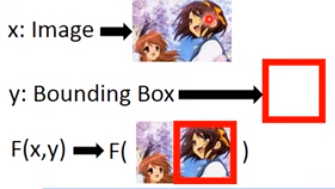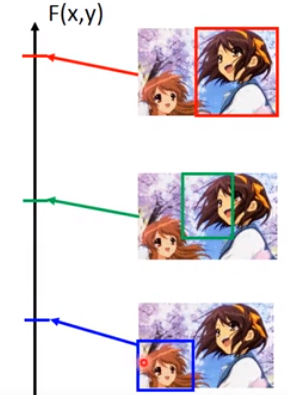文章目录
公式输入请参考: 在线Latex公式
PPT
Structured Learning
我们学过的DL,SVM等,输入和输出都是向量,但是,有的时候,我们想要输入的不是一个向量,按照OO的思想来讲,我想要输入一个对象,如:输入树形结构,输出也是一个树形结构。
这里的X和Y不再局限于向量,而是对象。
Xis the space of one kind of obiect. Y is the space of another kind of object.
· We need a more powerful function
· Input and output are both objects with structures
· Object: sequence, list, tree, bounaing box……
Example Application
· Speech recognition
·X: Speech signal(sequence)>Y: text(sequence)
· Translation
·X: Mandarin sentence(sequence)->Y: English sentence(sequence)
· Syntactic Paring
·X: sentence>Y: parsing tree(tree structure)
· Object Detection
·X: Image->Y: bounding box
· Summarization
·X: long document.>Y: summary(short paragraph)
· Retrieval
·X: keyword ->y: search result(a list of webpage)
看上去ST貌似很麻烦,实际上ST有一个统一的框架:
Unified Framework
Training
找到一个函数
,这里和之前不一样,之前都是找
函数
的输入是
和
,输出是一个实数
。
是衡量输入
和
之间有多匹配,匹配度(compatible)越高,输出值越大
Inference(Testing)
给定一个对象X,目标是:
上节中的函数
,是输入
,输出
:
,结合上面的式子:
不知道为什么?没关系,看个例子:
Unified Framework-Object Detection
·Task description
·Using a bounding box to highlight the position of a certain object in an image.
输入
:图像,输出
:边界框
例如:

貌似叫凉宫春日?

按框架的讲法:

是衡量框和人物的匹配度。


testing的时候就是找一张含有图片。

然后穷举所有框框有可能出现的地方。然后看哪个框框的得分最高

Unified Framework-Summarization
·Task description
·Given a long document
·Select a set of sentences from the document,and cascade the sentences to form a short paragraph.
输入是一个长文档
,其中
表示文档中第
个句子。
输出是一个总结

训练:当文档与总结配对的时候
的值很大

testing的时候,穷举所有的总结,看哪个总结配上文档
值最大。

Unified Framework-Retrieval
·Task description
·User input a keyword
·System returns a
of web pages
输入是查询词,输出是查询的结果


Unified Framework的统计学角度理解
训练:
估计两个对象
和
的联合分布概率,记为
:
testing就是:
给定x的条件下,求y出现的最大概率
由于分母和y求最大值没有关系,所以分母可以去掉
这样就和前面讲的对应起来了:

最下面的问号意思是:之前的
是求xy的匹配度,
是求xy的联合概率,这里两个事情是不是一样??理论上是一样的
但是统计学上有如下缺点:
·Probability cannot explain everything
·0-1constraint is not necessary. 很多对象是高维的,加这个限制就要做normalization,花费太大精力,没有必要。
好处就是:容易理解。
Energy-based Model:这个是立坤大佬提出的模型,实际上也是ST。
http://www.cs.nyu.edu/~yann/research/ebm/
Unified Framework的三个问题
问题一
很难想象
是什么样子
·Evaluation:What does
look like?
·How
compute the "compatibility"of objects
and

问题二
在testing阶段如何求解最大值问题。
·Inference:How to solve the “arg max” problem
The space Y can be extremely large!
Object Detection:Y=All possible bounding box(maybe tractable)这个就有无穷多个组合。。。
Summarization:Y=All combination of sentence set in a document …
Retrieval: Y=All possible webpage ranking ….
问题三
Training: Given training data, how to find
我们有的训练数据:
我们要训练
,使得正确匹配的
的得分要高于其他(x,y),这个训练过程是非常难以完成。

小结

要下课了,后面提示这三个问题要用GAN解决。
